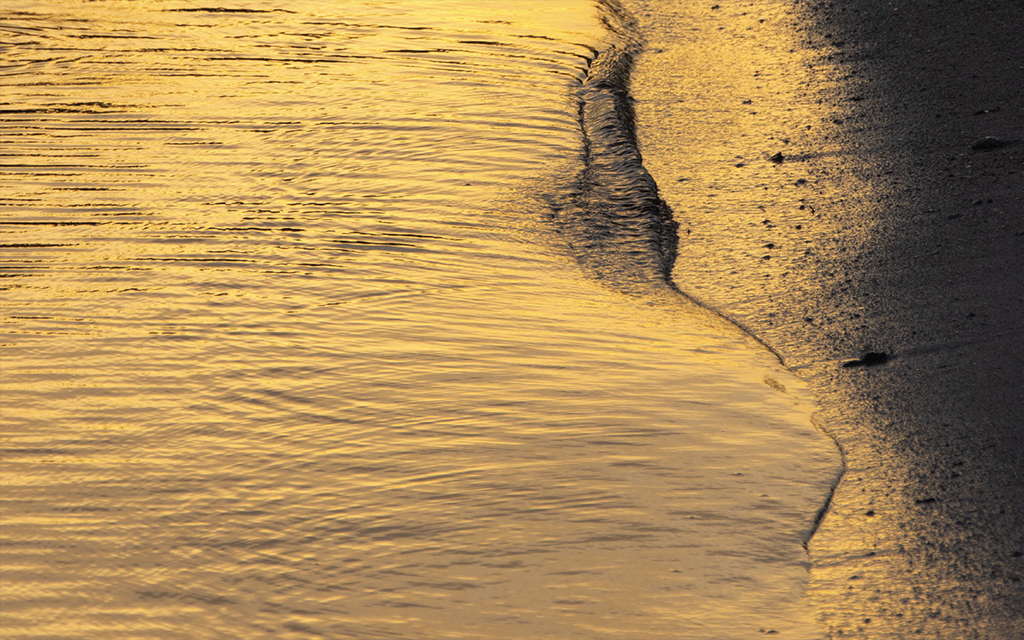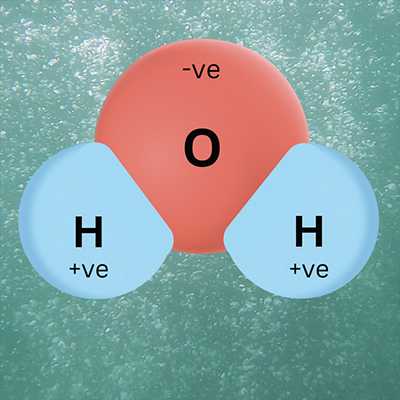
Kerry McKay takes a look at the properties that make water the supporter of life, and the prospect of microplastics altering our planet’s sustenance.
Water is one of the most amazing substances in the universe. All life relies on water to exist, and for many of us, water brings a quality of life to our often stressful lives. World Water Day was on the 22nd of March, so let’s take a moment to appreciate the wonders of H2O.
 Water is a small and simple molecule composed of one oxygen atom and two hydrogen atoms. The hydrogen atoms are not directly opposite each other, making water an unbalanced molecule. This is what makes water polar, meaning it has a slightly positively charged side (the hydrogen atoms) and a slightly negatively charged side (the oxygen). From this simple structure stems all of water’s amazing properties.
Water is a small and simple molecule composed of one oxygen atom and two hydrogen atoms. The hydrogen atoms are not directly opposite each other, making water an unbalanced molecule. This is what makes water polar, meaning it has a slightly positively charged side (the hydrogen atoms) and a slightly negatively charged side (the oxygen). From this simple structure stems all of water’s amazing properties.
Having charged sides means water molecules stick to themselves (cohesion). This is what causes water to have surface tension. You might best remember this property from a painful belly-flop at the pool! This cohesion is also why trees can suck water upwards, against gravity.
Water can dissolve other polar substances, such as the salts and nutrients that make the sea salty. Think of magnets attracting each other. In contrast, oil is a non-polar substance that has no charge. This is why oil doesn’t mix with water.
Unusually, water can be found naturally in liquid, solid and gaseous states. Even more remarkably, solid water (ice) floats on liquid water. The crystalline structure formed in ice crystals holds the molecules apart. In liquid water, the molecules rub close around each other making the liquid more dense. This is handy as it means ice forms on the water’s surface, leaving the depths as a liquid for life to go on living, and of course, for us to go ice diving.
All life relies on water to exist, and for many of us, water brings a quality of life to our often stressful lives
It takes lots of energy to increase the temperature of water, known as a high heat capacity. This is useful in the environment, as it means that bodies of water can absorb lots of energy before they get warmer. This helps to regulate temperature, keeping it more stable for the awesome things living in water.
The high heat capacity of water also makes it good at heat exchange. This is important for all living cells to function, as well as for certain technologies such as the steam engines we see in shipwrecks.
Studies suggest the oceans have absorbed over 90% of global warming so far, but we know the oceans are now warming.
The sun is a strong energy source and can turn water into a gas. Cloud formation is usually triggered by tiny particles, such as dust, acting as cloud condensation nuclei. Massive volcanic eruptions spewing dust into the atmosphere can lead to more cloud formation and a global cooling effect. Now scientists are learning that microplastics (plastic particles less than 5mm in size) are even in our air, and are also likely to lead to more cloud formation.
Plastic particles in the upper atmosphere degrade much faster than on the ground due to the increased exposure to UV radiation. This means more microplastic particles are being created in our skies as larger pieces break apart. As they degrade, these plastics release greenhouse gases, contributing to global warming, and more particles to trigger cloud formation. Of course, if there is plastic in our clouds, then it should be no surprise that there is plastic in our rain too.
Atmospheric and ocean circulation causes microplastics to be concentrated in the polar regions. This has happened repeatedly with many pollutants and harmful chemicals, such as heavy metals and persistent organic pollutants. The cold regions trap these substances, essentially holding them in cold storage. As the polar regions warm up and ice melts, we could face a large release of centuries worth of pollutants into our environment.
We live in the ‘plasticene’ and there are consequences for our careless actions. If you haven’t already started finding ways to reduce plastic in your life, there’s no better time than now.
Article ‘’Wondrous water’ by Kerry MacKay first published in SCUBA magazine, Issue 153 March 2025.

 Author: Kerry MacKay | Posted 13 Apr 2025
Author: Kerry MacKay | Posted 13 Apr 2025



